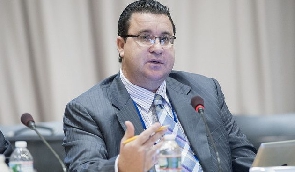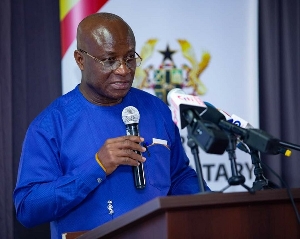In 2012, the World Bank signed an agreement with Ghana to work on an “eTransform” project. The Bank would provide $97 million to help digitize government services and improve connectivity.
12 years later and with the project coming to a close, has it yielded any real-world results?
The eTransform project in Ghana is a comprehensive initiative aimed at leveraging information technologies to improve public service operations and foster digital inclusion.
The project’s objective was to improve the targeting of government resources, enhance the efficiency and coverage of priority government services, and nurture entrepreneurship and job creation through ICT-enabled entrepreneurship.
Some of the project components included:
Unique electronic identification systems innovative applications to improve service delivery in health, education, judicial, and parliamentary services development of internet and computer networks across Ghana.
Grants were provided to young entrepreneurs, with tech hubs like the Ghana Tech Lab, the Ghana Innovation Hub in Accra, and the Kumasi Business Incubator in Kumasi boosting entrepreneurial skills for over 11,000 young people.
By the numbers
The original eTransform Ghana project was approved in 2012 with a $97 million commitment from the World Bank.
In 2020, the World Bank agreed to provide an additional $115 million in financing. In total, the project is estimated to have a total financing amount of US$212 million.
Setbacks, challenges, and little real-world impact
The eTransform project has faced challenges in implementation and there have been reports about the effectiveness of some of the projects which have been launched.
The Ghana Electronic Procurement System (GHANEPS) was launched in April 2019 and was expected to save the government about $10 million every year. However, in a report by Bright Simmons, there was a report that found hundreds of entries for less than $1 and many records missing award amounts.
Ghana E-Procurement Page
The $20 million e-Immigration system has not been fully deployed 6 years after it was expected to launch. However, the Vice President recently stated that a component of the project, namely the e-Gates, will be deployed at the end of 2024.
Ghana’s Integrated Financial Management Information System (GIFMIS) was to provide insights into the system’s performance and impact on financial management in the country.
The system was to improve the management of public funds and enhance financial accountability within Ministries, Departments, and Agencies (MDAs) and Metropolitan, Municipal, and District Assemblies (MMDAs) in the country.
Reports from Ghana’s Auditor General have reported that more than 86% of government payments meant to be covered by the system have been bypassing it, rendering it ineffective.
The $97 million e-Justice project was launched in 2019 to do away with the manual process of assigning cases to judges which was to be done electronically.
However, according to our research, many of the processes are still done manually, five years after the launch of the platform.
According to World Bank documents, Phase 2 of the project has been canceled due to the risk of not being completed by the project’s end date.
The digitisation of the Registrar General Department (now Office of Registered Companies (ORC)) appears to be in limbo as looks like the digital implementation was not progressing as expected.
Reallocation of Funds For eTransform Project
In a news interview last year, the outgoing World Bank Country Director, Frank Pierre Laporte, stated that project funds that have been allocated to Ghana and have been not utilised will be sent back to Washington DC.
The eTransform project is scheduled to end in June 2024 and the funds which are to be utilised for the project are at risk of being taken back to Washington for other uses.
What happens next?
Currently, the eTransform project is expected to end at the end of June 2024 unless it’s extended. But with the issues discussed above, has the project achieved its overall goal? Or has it squandered a lot of potential?
Click to view details



Business News of Tuesday, 11 June 2024
Source: techlabari.com

















